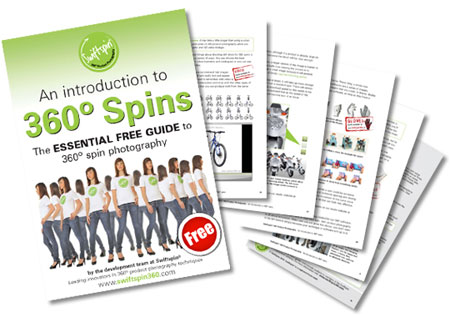PHOTOGRAPHERS. Feedback from more than 1,000 photo editors and buyers worldwide is summarized in the 2012 edition of the report “What Buyers Want from Photographers Guide.” The report was a joint project of PhotoShelter and Agency Access—two companies dedicated to helping professional photographers be more successful in marketing themselves. The 35-page e-book is available free from the PhotoShelter or Agency Access websites.
 In March 2012, PhotoShelter and Agency Access sent out a 25-question survey to Agency Access’ database of 90,000 global recipients. All of the recipients identified themselves as someone who either hires photographers for commission or assignment work or licenses still photography. A total of 1,000 buyers responded, providing written responses and anecdotes to some of the survey’s open-ended questions.
In March 2012, PhotoShelter and Agency Access sent out a 25-question survey to Agency Access’ database of 90,000 global recipients. All of the recipients identified themselves as someone who either hires photographers for commission or assignment work or licenses still photography. A total of 1,000 buyers responded, providing written responses and anecdotes to some of the survey’s open-ended questions.
The buyers who responded come from ad agencies (40%), design agencies (15%), editorial publications (15%), corporations (10%), marketing agencies (6%), book publishers (3%) non-profits (3%), freelance (2%), and other (6%). The most common titles of the photo buyers who responded include art director, creative director, designer, copywriter, design director, photo editor, graphic designer, and art buyer.
The authors of the 2012 report note that “The consistency among responses helped us understand that regardless of where photo buyers work or their particular photographic needs, they share clear similarities on how they want to be pitched, how they wish to navigate websites, and the personal characteristics of photographers they seek.”
The questions addressed a range of topics such as:
- How photographers should market themselves to photo buyers
- What makes a great website
- The types of video skills buyers need right now
- What obstacles prevent buyers from finding good photographers
- The personal traits buyers look for (and don’t look for) in a photographer
After describing the types of photo buyers who participated in the survey, the guide presents a short summary of how buyers search for images and photographers and discusses some of the trends photo buyers are seeing, both in technology and budgets.
For example, one associate creative director at an ad agency noted that, “Boundaries between still and moving images are becoming blurred. Interactive books are creating new opportunities for photographers and filmmakers alike.”
Of the 21.9% of photo buyers who said their budgets were increasing compared to 2011, the majority were from advertising agencies (44.5%), design agencies (16.5%), corporations (11.9%), and editorial publications (9.6%). The majority of respondents (56.5%) said their photography budgets for 2012 were the same as 2011.
The 35-page report is chock-full of helpful comments and insights such as the ones below:
- A marketing manager for an architecture/interior design firm observed that: “I feel photographers are too persistent to the point that it can sometimes be unprofessional. I am happy to make portfolio meetings with new talent, but when I am e-mailed, called, and sought after on a daily basis, I choose not to work with this individual or firm.”
- The art buyer at the marketing agency JWT says she prefers that promos not be put in an envelope or be produced in the form of a large, elaborately folded piece: “Photographers should remember that promoting themselves is about promoting their work. There is definitely room for some fun and unique ideas—just make sure that it makes sense for the type of work you do.” She suggests sending a simple, well-designed, well-produced postcard with an outstanding image. “Whether it is relevant to what I’m working on at the moment isn’t as important to me as whether I can see that you’re a great photographer with vision.”
- A photo editor at Men’s Health magazine emphasized the need to make your website hassle free. “Photo editors appreciate links to websites that navigate easily, load quickly, don’t hae music, and showcase thumbnails that can be scrolled through quickly. Photographers need to have websites that are streamlined so they’re easy to use, very intuitive, and don’t have a lot of bells and whistles.”
About the Sponsors of the Study
Agency Access is a one-stop provider of marketing services for photographers and illustrators. Services include access to a global database of thousands of potential clients and assistance with email, direct mail, cold-calling, design, website portfolio editing, and marketing campaign consultations.
PhotoShelter is a leader in portfolio websites and business tools for serious photographers. They offer powerful features and resources for marketing your photos, such as SEO and social sharing capabilities and options for licensing photography, selling prints online, and pro-strength file delivery tools.
LINKS
Guide: 2012 What Buyers Want from Photographers Guide
Agency Access
PhotoShelter
 PHOTOGRAPHERS. “Sustainable Business Models: Issues and Trends Facing Visual Artists” is the title of a symposium that will be conducted by The American Society of Media Photographers (ASMP) on Thursday, September 27, 2012 at The Times Center in New York. Thought leaders will discuss the impact of shifts in the media industry, and creative approaches to compensation that will lead to sustainable business models for imaging professionals.
PHOTOGRAPHERS. “Sustainable Business Models: Issues and Trends Facing Visual Artists” is the title of a symposium that will be conducted by The American Society of Media Photographers (ASMP) on Thursday, September 27, 2012 at The Times Center in New York. Thought leaders will discuss the impact of shifts in the media industry, and creative approaches to compensation that will lead to sustainable business models for imaging professionals.






